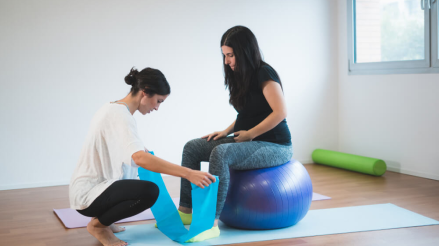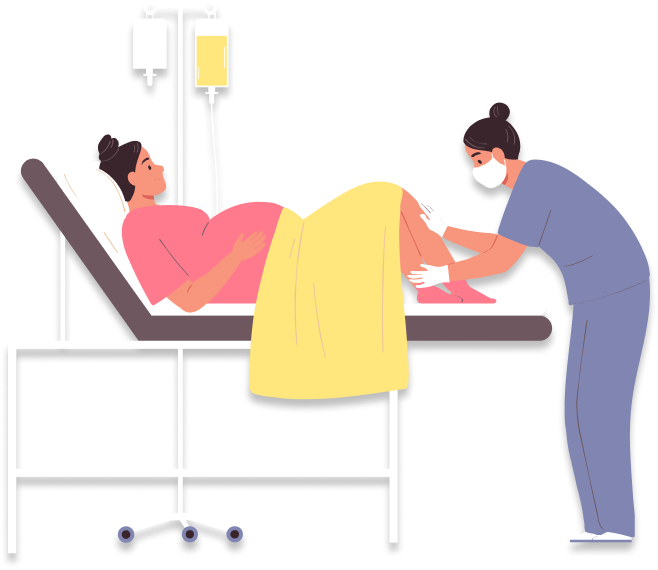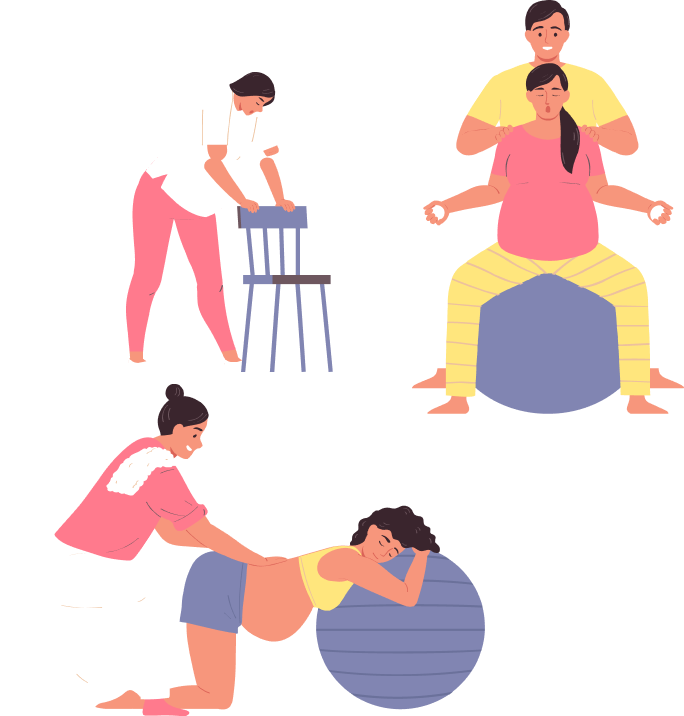You may also like…
-

Recovery After A Vaginal Child Birth
-

Recovery After A Caesarean ChildBirth
-

Exploring The Emotions Of Postpartum Period (Managing Emotions After Labour, Child Birth)
-

Breastfeeding Supplies Checklist
-

Recovering from Diastasis Recti (Separated Stomach Muscles) after Pregnancy
-

Medicines Contraindicated During Breastfeeding
Delivery Labour Birth
What is Labor?
Labor is basically a process through which your body delivers your baby to the outside world. Your uterus tightens and relaxes through which specific movements are curated pushing the baby out of the vagina. This happens when the cervix is 10 cm (about 4 inches) open and contractions are strong enough. For a first time pregnancy labor may last from 12-20 hours, there are some signs of labour that help you know when to rush to the hospital right away !
There are 3 main stages of labor:
First Stage - From start of labor diagnosis to cervix dilated 3-4 cm
This refers to the time from diagnosis of labour (full dilatation of cervix which usually happens with the maternal urge to push and baby's head resting on the perineum) to full dilatation of cervix (10 cm). The first stage of labour can be divided into 2 phases
The latent phase is the period between onset of regular painful contractions and 3-4 cm cervical dilatation. (this phase usually lasts between 3 to hours)
The active phase is the time period between the cervix dilated at 3-4 cm to full dilatation of 10 cm (this phase usually lasts between 2 to 6 hours). Cervical dilatation occurs at 1cm/hour or more in normal labour (considered abnormal if it occurs at less than 1 cm in 2 hours)
Second Stage - From 3-4 dilated cervix to full dilatation and maternal urge to push
This is the time from full dilatation of cervix to delivery of fetus/baby or babies. The second stage may also be divided into 2 phases:
The passive phase- is the time from full cervical dilataion and the onset of involuntary expulsive contractions. At this point maternal urge is absent and the fetal head is high. (Normally lasts 1 to 2 hours)
The active phase- is the time when there is a maternal urge to push because the fetal head is low (often visible). (Normally, this should not last more than 2 hours)
Third Stage: From delivery of baby to delivery of placenta and membranes
This is the time from the delivery of the fetus or baby until complete delivery of the placenta and membranes. The placenta is usually delivered within a few minutes of the birth of the baby.( A third stage should normally last less than 20 minutes)
Lightening- towards the end of the pregnancy, your baby moves down. When this happens you will be able to breathe more easily, feel less pressure on your ribs, urinate less often, feel the heartburn/indigestion relaxing.
Mucous Plug: while pregnant, there is thick mucus in your cervix, as labour approaches the cervix begins to thin and open wider, you may notice thick mucus in your underwear, in toilet, or you may not notice at all.
Bloody show: a pink, red, brown discharge may be noticeable before or during labour called a bloody show; a sign that your cervix has started to transform for labour.
Bag of water breaks: the bag in which your baby has been living the entire pregnancy journey will break and this may happen before labour, or when the baby is ready to be born. Whenever this happens, a lot of water will be leaking from your vagina. Whenever this happens; note the time down, observe and note the colour of water (this should be clear), notice the smell of this (it should not smell), do not use a tampon – use a pad or tissues if need be. Get in contact with your health provider urgently for further instructions.
What do I need to know about contractions?
Contractions: late in pregnancy you will start to have contractions (uterus contracts, pauses there and relaxes to contract again). These are very strong and painful; they help the womb or uterus to expel the baby which is ready to be born. These are called pre-labour or Braxton-Hicks contractions.
Pre-labour contractions and true labour contractions:
Pre labour contractions | True labour contractions |
Don’t become strong with time | Become stronger with time |
Don’t become rhythmic/regular | Become rhythmic/regular and less further apart |
Disappear with walking | Get stronger with walking |
No bloody show | Very common to have bloody show |
Disappear with rest |
|
It is highly recommended to time your labor contractions. From the beginning to the end and the time period it takes for the next one to start. You basically need to know:
- The time period it takes for one to start till the next- basically the frequency.
- Time from the start of one contraction to the end- the time duration.
- If your contractions are 5 mins apart and are increasing in intensity – getting stronger with time
- If you are bleeding from the vagina
- If your water breaks
What should you do during a contraction?
It is recommended to be at home during early labor and go to the hospital when the contractions are strong enough. During labor certain changes occur to bring about birth to occur: the uterus changes from a relaxed to an active state and the cervix which is long, firm and closed throughout the pregnancy now has to soften, shorten and thin out and dilate so labor can happen. The uterus must have strong and frequent contractions to make the baby’s movement towards the pelvis so birth can happen.




